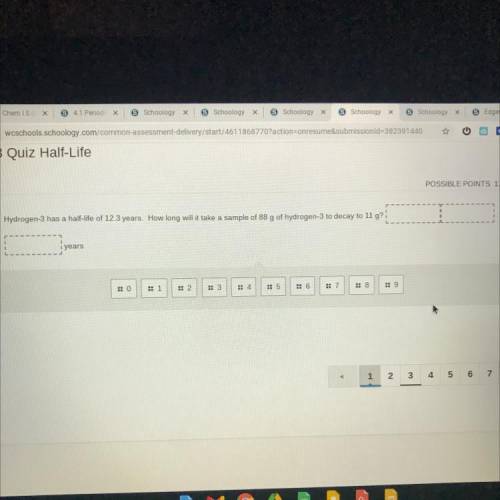
Chemistry, 02.03.2021 04:00, juju323261
Hydrogen-3 has a half-life of 12.3 years. How long will it take a sample of 88 g of hydrogen-3 to decay to 11 g?!


Answers: 3
Other questions on the subject: Chemistry


Chemistry, 22.06.2019 18:40, johnnysteeler9934
What is one real world example of a colligative property?
Answers: 2

Chemistry, 22.06.2019 19:00, nayashuntel
How many liters of ethylene glycol antifreeze (c2h6o2), with a density of 1.100 g/l, would you add to your car radiator containing 15.0 kg of water if you needed to protect your engine to - 21.5°c? for water, kf = 1.86°c m -1.
Answers: 1

Chemistry, 23.06.2019 01:30, elijahbebeastin
What are several ways to reduce the effect of friction
Answers: 2
Do you know the correct answer?
Hydrogen-3 has a half-life of 12.3 years. How long will it take a sample of 88 g of hydrogen-3 to de...
Questions in other subjects:


Biology, 04.12.2019 21:31



Advanced Placement (AP), 04.12.2019 21:31











